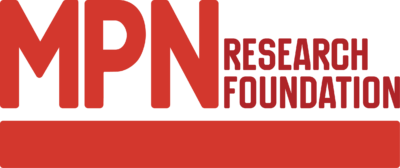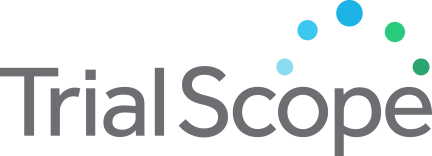Inclusion Criteria:
Pre-Transplant Inclusion Criteria (Step 1)
- - Male or female subject aged ≥ 18 years.
- - Diagnosis of primary or secondary myelofibrosis.
- - Eligible to undergo a myeloablative or reduced intensity conditioning regimen (MAC or
RIC)
- Eligible to undergo a standard of care bone marrow biopsy with aspirate as part of his
or her routine pre-transplant work-up.
- - Peripheral blood stem cell (PBSC) graft.
- - 10/10 HLA matched related or matched unrelated donor.
- - ECOG performance status ≤ 2.
- - For female subjects: Negative pregnancy test or evidence of post-menopausal status.
The post-menopausal status will be defined as having been amenorrheic for 12 months
without an alternative medical cause. The following age-specific requirements apply:
- - Women < 50 years of age:
- Amenorrheic for ≥ 12 months following cessation of exogenous hormonal
treatments; and.
- - Luteinizing hormone and follicle-stimulating hormone levels in the
post-menopausal range for the institution; or.
- - Underwent surgical sterilization (bilateral oophorectomy or hysterectomy).
- - Women ≥ 50 years of age:
- Amenorrheic for 12 months or more following cessation of all exogenous
hormonal treatments; or.
- - Had radiation-induced menopause with last menses >1 year ago; or.
- - Had chemotherapy-induced menopause with last menses >1 year ago; or.
- - Underwent surgical sterilization (bilateral oophorectomy, bilateral
salpingectomy, or hysterectomy).
- - Female subjects of childbearing potential and male subjects with a sexual partner of
childbearing potential must agree to use a highly effective method of contraception as
described in Section 5.4.
1.
Treatment Inclusion Criteria (Step 2)
- - Male or female subject aged ≥ 18 years.
- - Diagnosis of primary or secondary myelofibrosis.
- - Have undergone a myeloablative or reduced-intensity conditioning regimen (MAC or RIC)
and be 50-80 days from Day 0 of transplant at initiation of study therapy.
- - Peripheral blood stem cell (PBSC) graft.
- - 10/10 HLA matched related or matched unrelated donor.
- - ECOG Performance Status ≤ 2.
- - Adequate organ function as defined as:
- Hepatic:
- Total Bilirubin ≤ 1.5x institutional upper limit of normal (ULN)
- AST(SGOT)/ALT(SGPT) ≤ 3 × institutional ULN.
- - Renal:
- Estimated creatinine clearance ≥ 30 mL/min by Cockcroft-Gault formula:
- TSH and T4 within normal limits or adequately controlled thyroid function.
- - For female subjects: Negative pregnancy test or evidence of post-menopausal status.
The post-menopausal status will be defined as having been amenorrheic for 12 months
without an alternative medical cause. The following age-specific requirements apply:
- - Women < 50 years of age:
- Amenorrheic for ≥ 12 months following cessation of exogenous hormonal
treatments; and.
- - Luteinizing hormone and follicle-stimulating hormone levels in the
post-menopausal range for the institution; or.
- - Underwent surgical sterilization (bilateral oophorectomy or hysterectomy).
- - Women ≥ 50 years of age:
- Amenorrheic for 12 months or more following cessation of all exogenous
hormonal treatments; or.
- - Had radiation-induced menopause with last menses >1 year ago; or.
- - Had chemotherapy-induced menopause with last menses >1 year ago; or.
- - Underwent surgical sterilization (bilateral oophorectomy, bilateral
salpingectomy, or hysterectomy).
- - Female subjects of childbearing potential and male subjects with a sexual partner of
childbearing potential must agree to use a highly effective method of contraception as
described in Section 5.4.
1.
- - Male subjects must agree to use a condom during intercourse for the duration of study
therapy as described in Section 5.4.
1.
- - Recovery to baseline or ≤ Grade 1 CTCAE v5.0 from toxicities related to any prior
cancer therapy, unless considered clinically not significant by the treating
investigator.
- - Able to provide informed consent and willing to sign an approved consent form that
conforms to federal and institutional guidelines.
Exclusion Criteria:
Exclusion Criteria (Step 2)
- - Receiving other investigational agents concurrently.
- - Prior systemic anti-cancer therapy or any investigational therapy within five
half-lives prior to starting study treatment.
- - Prior radiotherapy within 6 weeks prior to the first dose of study treatment.
- - Major surgery within 6 weeks prior to starting study drug or patients who have not
fully recovered from major surgery.
- - The diagnosis of another malignancy within ≤ 2 years before study enrollment, except
for those considered to be adequately treated with no evidence of disease or symptoms
and/or will not require therapy during the study duration (i.e., basal cell or
squamous cell skin cancer, carcinoma in situ of the breast, bladder or of the cervix,
or low-grade prostate cancer with Gleason Score ≤ 6).
- - Current evidence of uncontrolled, significant intercurrent illness including, but not
limited to, the following conditions:
- Graft-versus-host disease:
---Acute or chronic.
- - Cardiovascular disorders:
- Congestive heart failure New York Heart Association Class III or IV,
unstable angina pectoris, serious cardiac arrhythmias.
- - Stroke (including transient ischemic attack [TIA]), myocardial infarction
(MI), or other ischemic events, or thromboembolic event (eg, deep venous
thrombosis, pulmonary embolism) within 3 months before the first dose.
- - QTc prolongation defined as a QTcF > 500 ms.
- - Known congenital long QT.
- - Left ventricular ejection fraction < 55%.
- - Uncontrolled hypertension defined as ≥ 140/90 as assessed from the mean of
three consecutive blood pressure measurements taken over 10 minutes.
- - Any other condition that would, in the Investigator's judgment, contraindicate
the subject's participation in the clinical study due to safety concerns or
compliance with clinical study procedures (e.g., infection/inflammation,
intestinal obstruction, unable to swallow medication, [subjects may not receive
the drug through a feeding tube], social/ psychological issues, etc.)
- Active infection including HIV, tuberculosis (clinical evaluation that includes
clinical history, physical examination, radiographic findings, and TB testing in line
with local practice) or hepatitis C.
- - Note: Subjects with a past or resolved HBV infection (defined as the presence of
hepatitis B core antibody [anti-HBc] and absence of HBsAg) are eligible.
- - Autoimmune hepatitis or decompensated hepatic disease.
- - Medical, psychiatric, cognitive, or other conditions that may compromise the subject's
ability to understand the subject information, give informed consent, comply with the
study protocol or complete the study.
- - Known prior severe hypersensitivity to investigational product (IP) or any component
in its formulations (NCI CTCAE v5.0 Grade ≥ 3).
- - Subjects taking prohibited medications as described in Section 6.5.
1. A washout period
of prohibited medications for a period of at least five half-lives or as clinically
indicated should occur before the start of treatment.
- - History of neuropsychiatric disease, autoimmune disease, or pancreatitis.
- - Presence of active interstitial lung disease or pneumonitis, bronchiolitis obliterans,
pulmonary hypertension, ulcerative and hemorrhagic/ischemic colitis, and
ophthalmologic disorders.

 Translate
Translate